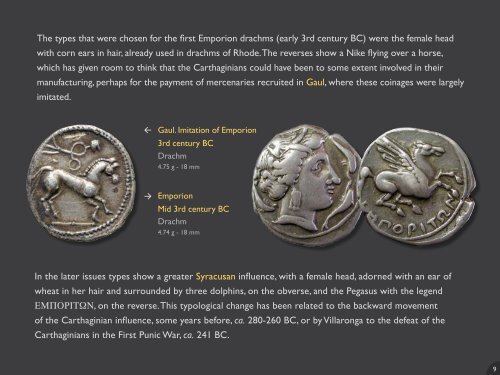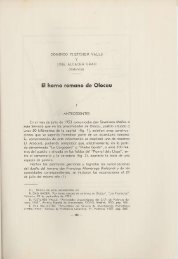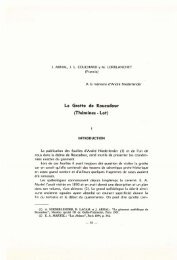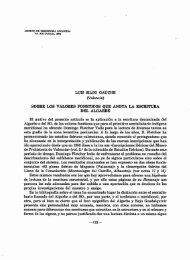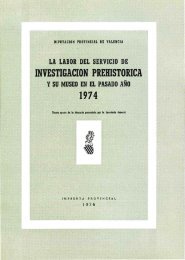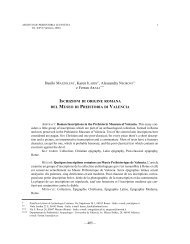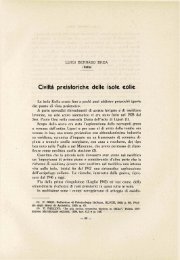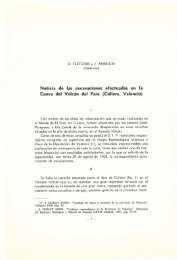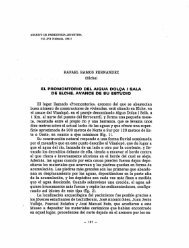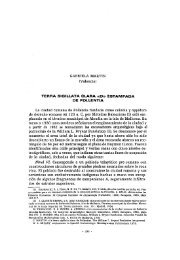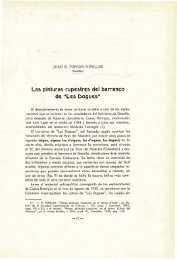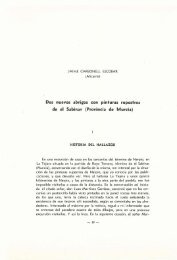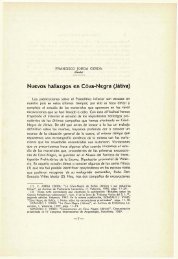Ancient Iberian Coinage - Museo Prehistoria
Ancient Iberian Coinage - Museo Prehistoria
Ancient Iberian Coinage - Museo Prehistoria
You also want an ePaper? Increase the reach of your titles
YUMPU automatically turns print PDFs into web optimized ePapers that Google loves.
The types that were chosen for the first Emporion drachms (early 3rd century BC) were the female head<br />
with corn ears in hair, already used in drachms of Rhode. The reverses show a Nike flying over a horse,<br />
which has given room to think that the Carthaginians could have been to some extent involved in their<br />
manufacturing, perhaps for the payment of mercenaries recruited in Gaul, where these coinages were largely<br />
imitated.<br />
←<br />
→<br />
Gaul. Imitation of Emporion<br />
3rd century BC<br />
Drachm<br />
4.75 g - 18 mm<br />
Emporion<br />
Mid 3rd century BC<br />
Drachm<br />
4.74 g - 18 mm<br />
In the later issues types show a greater Syracusan influence, with a female head, adorned with an ear of<br />
wheat in her hair and surrounded by three dolphins, on the obverse, and the Pegasus with the legend<br />
ΕΜΠΟΡΙΤΩΝ, on the reverse. This typological change has been related to the backward movement<br />
of the Carthaginian influence, some years before, ca. 280-260 BC, or by Villaronga to the defeat of the<br />
Carthaginians in the First Punic War, ca. 241 BC.<br />
9


